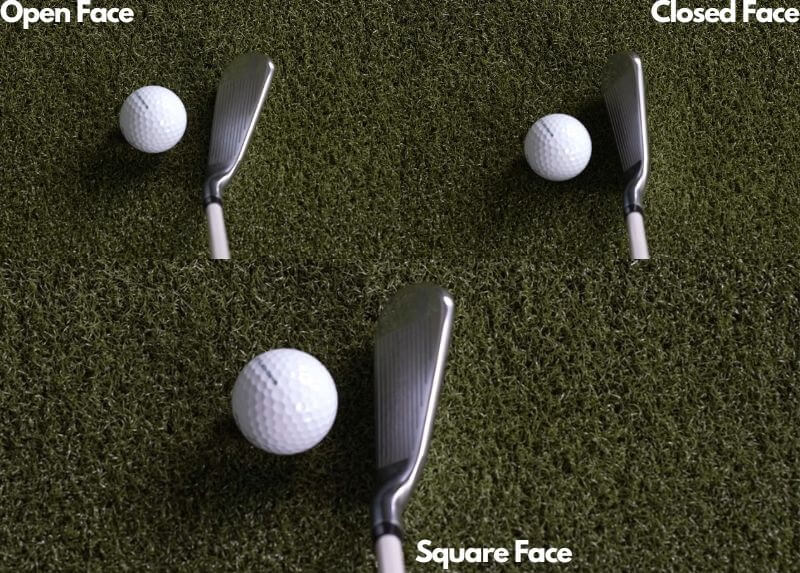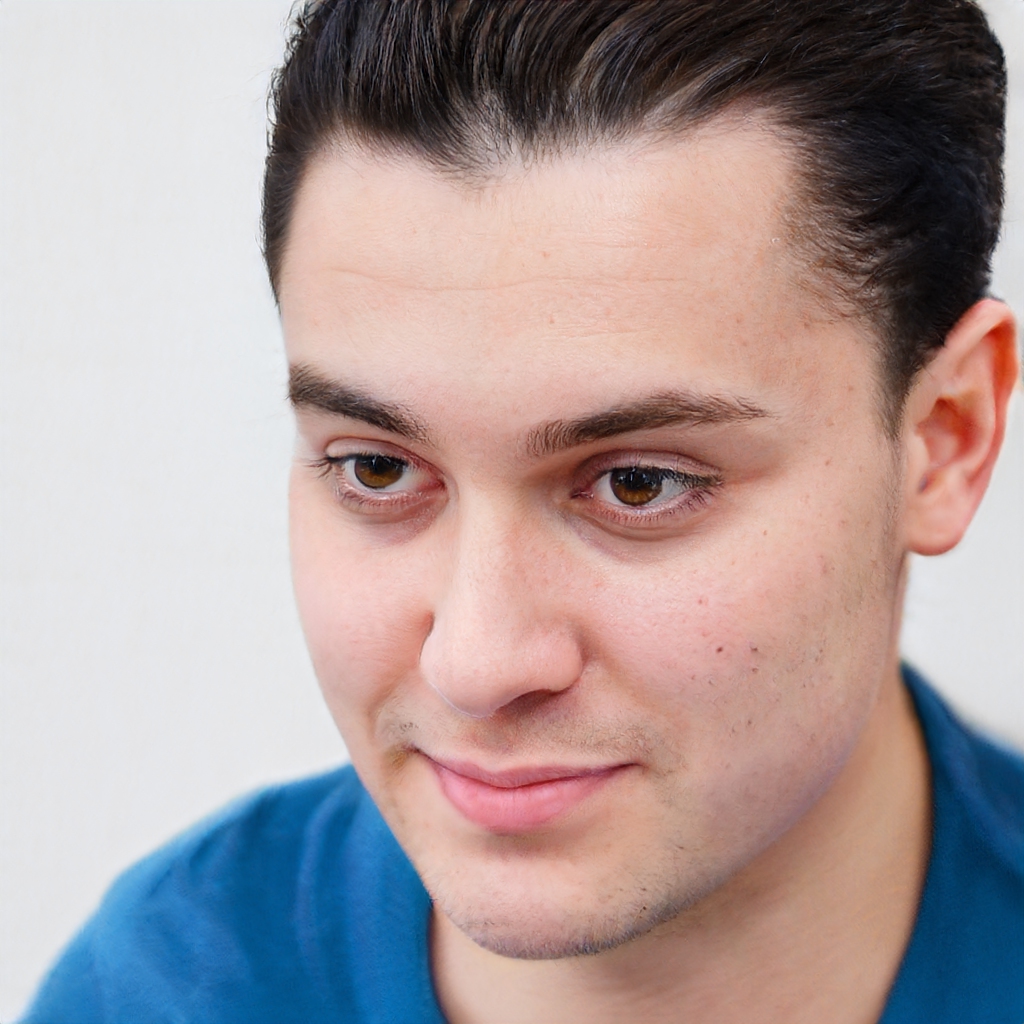Understanding face angle in golf is key for improving your game—it’s one of the most important aspects to consider when trying to perfect your swing. Face angle refers to how open or closed the clubface appears from the address, and it affects how you hit a shot, particularly regarding direction and shape.
Whether you’re a beginner or an experienced player looking to improve your technique, this article will break down what face angle means and provide tips on how it can be used effectively in your game. Read on as we explore what face angle is all about!
What Is Face Angle In Golf?
Simply put, face angle is the angle of the clubface when it meets the ball at impact. It can be measured in degrees, and variations in face angle can greatly impact how the ball travels. For example, if your face angle is too “open” or “closed”, the ball will be more likely to slice or hook.
Why Is Face Angle Important?
The face angle is a crucial element in golf that significantly determines the ball’s trajectory. The angle is the direction that the clubface is facing at impact. If the face is closed, the ball will have a hook spin and veer to the left, and if the face is open, the ball will have a slice spin and veer to the right. Therefore, a golfer must understand how to position their face angle correctly to achieve the desired shot shape.
This skill takes time and patience to master, but it can make all the difference in a player’s game once achieved. The face angle is one of the most critical factors to consider while playing golf, as it can affect a player’s swing and, ultimately, their overall performance.
Different Types Of Golf Face Angles
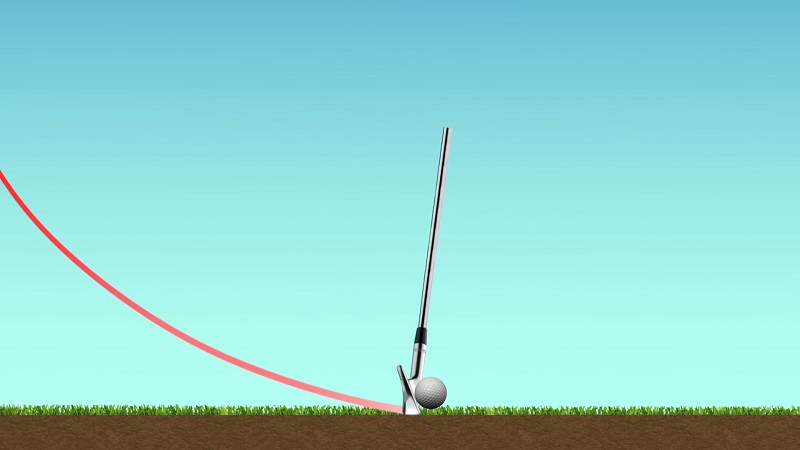
Face angle in golf is the angle at which a golfer addresses the ball, and it can have a major effect on the ball’s direction, flight, and curvature of the shot. There are three main golf face angle types: open face, closed face, and square face.
Open Face
Open face angles occur when the clubface is angled more towards the right of the target line for a right-handed golfer (or left of the target line for a left-handed golfer). This is the most common type of face angle and can be used to produce shots that curve right.
Closed Face
Closed face angles occur when the clubface is angled more towards the left of the target line for a right-handed golfer (or right for a left-handed golfer). This type of face angle can produce shots that curve left.
Square Face
Square face angles occur when the clubface is pointed directly at the target line, with no tilt to the left or right. This type of face angle is used for straight shots and can help golfers achieve greater accuracy.
How Do Golf Face Angles Affect Your Shots?
The angle of your club face can have a major impact on the success of a golf shot, as it affects more than just the direction of the ball, changing the distance and accuracy of a shot.
Additionally, adjusting the face angle alters the ball’s spin, influencing its trajectory, roll and shape. When the golfer adopts an open position, they usually see their ball slice towards the right-hand side, while a closed face will lead to a draw – or hook – in that same direction instead.
With good knowledge and understanding of how to adjust your club face angle effectively, you could soon give yourself an edge over your competitors or friends.
How Do You Determine Your Face Angle At The Address?
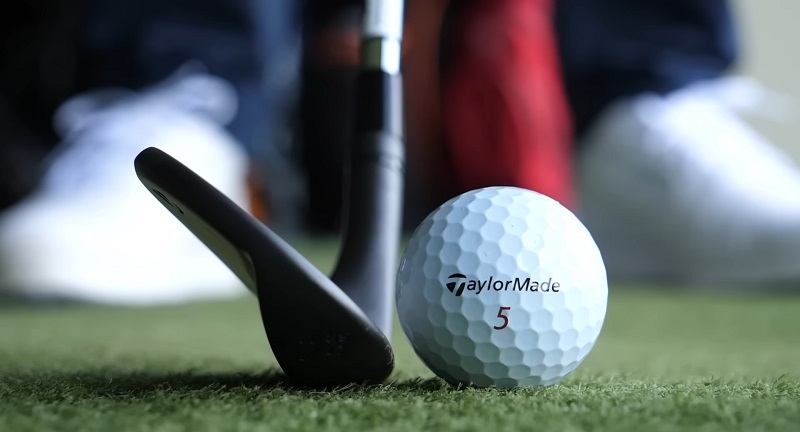
Determining the face angle at the address is an important step for golfers to ensure that they are hitting the ball in the right direction. Golf face angle is the angle at which a golfer stands when addressing the ball before taking a swing. It has been said that face angle is one of the most underrated aspects of golf, as it can drastically affect the trajectory of your ball and how accurately you hit it.
It is important to understand the alignment basics to determine golf face angle. At the address, golfers should strive for a parallel stance in which their feet, hips, shoulders, and eyes point in the same direction as the target line. If this isn’t achieved, the face angle will be off, and shots will suffer.
To ensure a proper golf face angle at the address, golfers should consider their feet about the ball and target line. The feet should be slightly open (angling away from the target) for a right-handed golfer; left-handed golfers should open them slightly in the opposite direction. This will help ensure that the face angle is parallel to the target line, giving golfers a great starting point when taking their shot.
Common Mistakes With Face Angles And How To Avoid Them?
Golf face angles in golf can be tricky to understand and apply correctly. Even experienced golfers make mistakes in face angles and must be aware of common mistakes to improve their game.
One of the biggest golf face angle mistakes is aiming too far to one side or the other. This often happens when a golfer adopts an exaggerated face angle to achieve more distance. While a face angle of up to 3-4 degrees can be advantageous, aiming too far to one side will result in an inaccurate shot. In addition, it is important to avoid adopting golf face angles that are too closed or open for your particular swing style.
Another common face angle mistake is failing to address the ball properly. Addressing the ball face down with an incorrect golf face angle can lead to mis-hits and off-target shots. Additionally, it is important to ensure that your face angle remains consistent throughout your shot. Any changes in the golf face angle should be made before you address the ball.
Finally, many golfers need to practice face angles at all. Getting some face angle practice is important, even if it is just hitting a few balls on the driving range. This will help you gauge how golf face angles affect your shots and better understand what face angle works best for you.
One common golf face angle mistake is setting up too ‘open’ or ‘closed’, which can cause the ball to go off-target. To avoid this, practice setting up correctly in front of a mirror and ensure that your face is parallel to the target line. Additionally, always check the face angle before hitting a shot, as it can change during the swing.
How To Use A Golf Face Angle To Improve Your Game?
Using a golf face angle properly can significantly impact your game. Learning how to adjust the face angle of your club can help you hit longer, straighter shots and hit draws and fades. Here are a few tips to help you make the most of your golf face angle:
Hit More Straight Shots – To hit straighter shots, make sure that your club face is square to the target at the address. This will help ensure that the ball goes where you intend it to.
Hit Draws And Fades – Adjusting the face angle of your club can help you hit draws and fades. Open the club faces slightly, so your swing path is inside out for a draw. Close the club faces slightly to hit a fade and swing outside to the path.
Improve Your Distance – Adjusting the face angle can help you hit longer shots. A closed club face will generate more backspins, which can help the ball stay in the air longer. An open club face will help the ball launch higher, which means it will fly further.
Improve Your Consistency – Once you have mastered golf face angles, you should see an improvement in your overall game. The ability to adjust the face angle of your club can help you hit consistent shots and score better.
How Do You Adjust Your Face Angle?
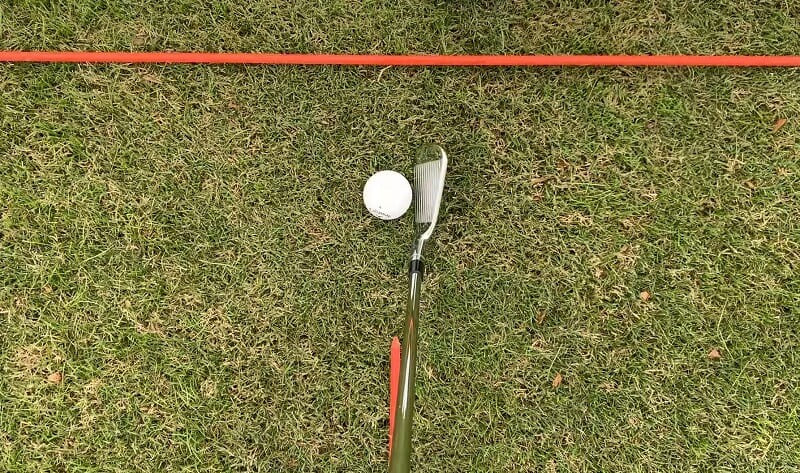
Adjusting the face angle of your golf club is relatively simple and can be done in just a few steps.
- Assess Your Lie – Before adjusting the face angle of your club, take a moment to assess the lie to determine what type of shot you need to hit.
- Make Adjustments – Once you have assessed the lie, make any necessary adjustments to the face angle of your club. For example, you may need to open or close the face of the club to hit a draw or fade.
- Address The Ball – Position your feet and body square to the target line. Then, address the ball with your clubface adjusted in the desired way.
- Grip The Club – Once you have addressed the ball, take your grip and ensure it is fluid and comfortable.
- Swing – Make your swing with the adjusted clubface to hit your desired shot.
Tips For Getting Golf Face Angles Right When Teeing Off
Getting the golf face angle right is essential for any successful golf shot. Here are a few tips to help you get your face angle perfect when teeing off:
Analyze Your Stance – Make sure you stand far enough away from the ball so that your club face is square to it, and do not step too close to the ball. Aim your hips and shoulders at the target, and make sure they face in the same direction as your club face.
Check Your Grip – Properly gripping your club is essential to getting the face angle right when teeing off. Make sure you firmly hold onto the club’s handle with a neutral grip.
Take Practice Swings – Before you hit the ball, make sure to take practice swings with your golf face angle square to the golf ball. This will help you get accustomed to having your face angle square when teeing off.
Visualize The Target – Focus on aiming at a specific target, and picture the face angle you need to hit that target. Visualizing the golf face angle before hitting will help ensure accuracy when teeing off.
Trust Your Instincts – If you have taken all the previous steps, trust your instincts! The face angle should feel natural and comfortable, so use your experience and intuition when aiming.
Ask For Help – If you still have difficulty, it may be worth asking a more experienced golfer or golf instructor to watch you tee off and provide advice.
Practice, Practice, Practice – As with all aspects of golf, the best way to refine face angles is through practice. Take the time to get golf face angles right, and practice regularly to improve your accuracy.
Final Thoughts
Golf face angle is an important factor in a golfer’s game, and understanding face angles in golf can help improve accuracy when teeing off. Be sure to take the time to practice face angles and make small adjustments as needed. Incorporate drills into your practice to increase golf face angle awareness, and ask for help from an experienced golfer or instructor if you need guidance. With practice and patience, face angle can help improve your game.
FAQs Section
Does An Open Face Cause A Slice?
An open face can cause the ball to slice. When a club face is open upon impact, the ball has more backspin and sidespin, which can cause it to slice off the desired target. To avoid this, ensure your club face is square and aligned with the target when teeing off.
How Can I Tell If My Face Is Open Or Closed?
To determine whether your face is open or closed, use an alignment stick or mirror to check the face angle at the address. An open face is pointing to the right of the target, while a closed face is pointing to the left of the target.
What Is A Good Face Angle In Golf?
A good face angle in golf is properly square to the target when addressing the ball. This will help ensure that the ball travels in the direction of the target.
What Is A Good Grip For A Golf Face Angle?
For most golfers, a neutral grip (where the palms of both hands are facing each other) is a good grip for a golf face angle. This allows the arms to move freely and helps ensure that the face is square to the target when striking the ball.
How Do I Check Your Golf Face Angle?
You can check your golf face angle by setting up with alignment sticks or using a mirror to ensure that the clubface is square to the target.
How Can I Improve My Face Angle?
To improve your golf face angle, practice regularly and use alignment sticks or mirrors to check your face angle before hitting. Incorporate drills into your practice sessions that encourage face angle awareness, such as face-on drills or tee shots with alignment sticks. Additionally, be aware of your face angle throughout the swing and make corrections as needed.

